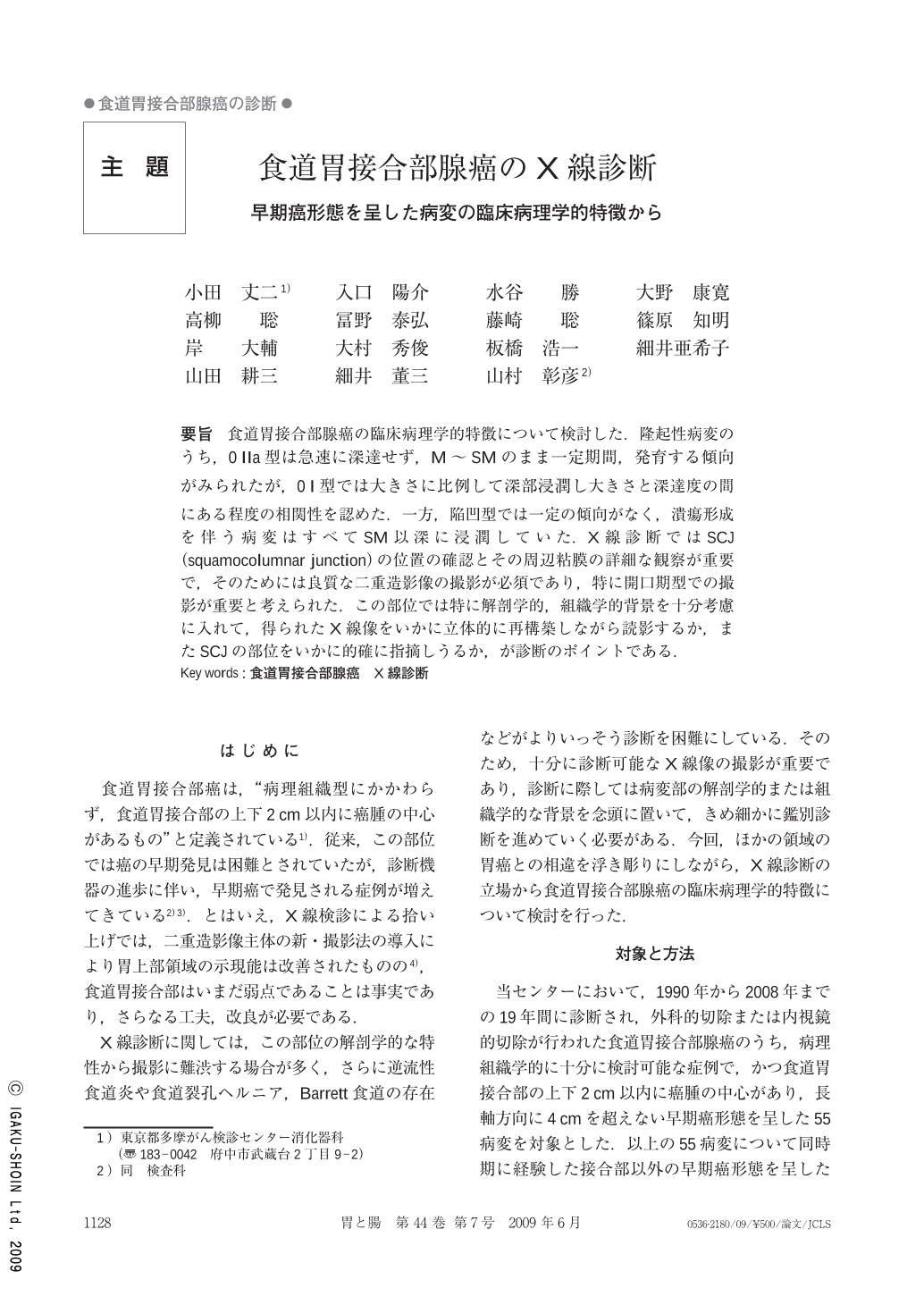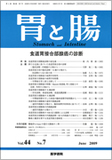Japanese
English
- 有料閲覧
- Abstract 文献概要
- 1ページ目 Look Inside
- 参考文献 Reference
- サイト内被引用 Cited by
要旨 食道胃接合部腺癌の臨床病理学的特徴について検討した.隆起性病変のうち,0IIa型は急速に深達せず,M~SMのまま一定期間,発育する傾向がみられたが,0I型では大きさに比例して深部浸潤し大きさと深達度の間にある程度の相関性を認めた.一方,陥凹型では一定の傾向がなく,潰瘍形成を伴う病変はすべてSM以深に浸潤していた.X線診断ではSCJ(squamocolumnar junction)の位置の確認とその周辺粘膜の詳細な観察が重要で,そのためには良質な二重造影像の撮影が必須であり,特に開口期型での撮影が重要と考えられた.この部位では特に解剖学的,組織学的背景を十分考慮に入れて,得られたX線像をいかに立体的に再構築しながら読影するか,またSCJの部位をいかに的確に指摘しうるか,が診断のポイントである.
We have examined the features of adenocarcinoma of the esophago-gastric junction(EGJ). In the protruding type, there is a correlation between tumor size and depth of invasion, so radiologic diagnosis is relatively effective when protruding tumors are detected. In the depressed type, there is no special tendency, but carcinomas with ulceration often invaded to the submucosal layer or deeper layer. It is indispensable in radiologic diagnosis to describe mucosal patterns in detail and the squamo-columnar junction(SCJ)clearly by the double contrast method, and it is important to detect the phase of the open type EGJ, especially. It is necessary to use various approaches such as changing the amount of air or barium, using the lateral view, interpreting radiologic images, after considering the anatomical and histological background.

Copyright © 2009, Igaku-Shoin Ltd. All rights reserved.


